How to prune an indoor rose for the winter, types of pruning, features of the procedure
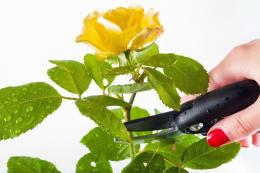
Fresh flowers are the best decoration for a garden or home. One of the most beautiful indoor plants is the rose. This flower requires constant care, especially it needs regular pruning.
The article will discuss how to prune an indoor rose for the winter or at other times of the year, and what the subtleties of the procedure are.
Content:
- Pruning an indoor rose - for what purpose?
- Types of Trimming
- Basic pruning, when and how
- Seasonal pruning
- How to prune an indoor rose for the winter after flowering
- Autumn pruning of indoor roses
- Sanitary trimmings
- Formative
- How to prune a rose to bloom, how to get constant flowering
Pruning an indoor rose - for what purpose?
Pruning is carried out to eliminate thickening of the bush and to stimulate abundant flowering.
The principle and technology are the same as for garden bush roses.
The main task is to remove or shorten old shoots to allow new ones to grow. Without pruning, flowering is possible, but the buds will be small and sparse. This can also lead to disease and even death of the plant.
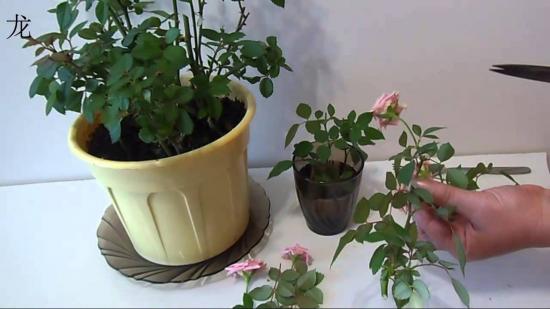
It is important to avoid 2 mistakes during manipulation:
- If you carry out the procedure ahead of schedule, when daylight is still short, the branches will begin to develop poorly, flowering will be rare, and the foliage will suffer.
- If you prune a rose too late, when growth appears from the buds, the pruning will stop the growth of the stem.As a result, due to exhaustion, the flower will not have enough strength to form buds.
To avoid mistakes, it is important to know in advance how and when to prune.
Types of Trimming
There are several cutting options.
| Basic trimming | It is carried out annually and regularly, during the same period of time. |
| Regulatory | Performed as needed if excess or weak shoots appear. |
| Formative | To create a beautiful shape. |
| Seasonal pruning | At certain times of the year, manipulations are performed that allow the bush to bloom better and promote growth. |
| Sanitary | Sick or weak shoots are cut to the base, and the sections are treated with special means. |
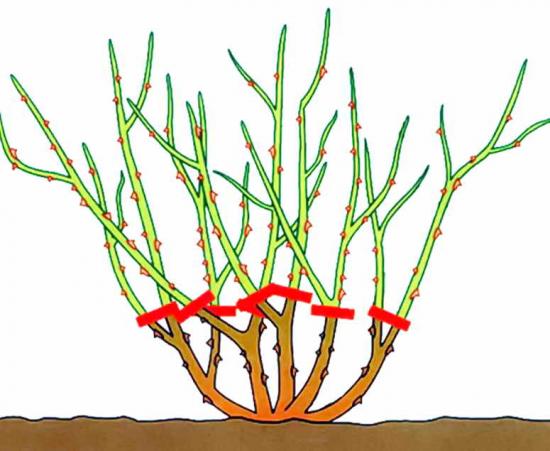
Pruning is divided into classes indicated in the table.
| Long trim | Only the top is cut off, done in the fall |
| Moderate | Carried out regularly throughout the growing season |
| Short | When a rose needs a complete pruning of all shoots due to illness |
| Combined | Includes multiple crops at once |
Each type is carried out in a certain season, or depending on the condition of the plant. Let's discuss trimming options in more detail.
Basic pruning, when and how
Basic pruning is carried out at the end of February or early March. To clearly guess the time, you need to be guided by the swelling of the buds; they should begin to develop, but should not have time to open.
This pruning should be done when there is at least ten hours of daylight.
Technology:
- All weak, diseased or dry branches must be eliminated. This allows the flower not to waste extra energy on empty flowers.
- Remove excess growth in the central part. Sections should be made along the outer buds. A sharp knife is used as a tool.A cut is made from the bud to the shoot.
- If several shoots have formed between the stem and the leaf, you need to leave one, the one that looks stronger and healthier.
- After such manipulation, the flower should be placed on the windowsill, where there is more light, so that it is saturated with solar energy and becomes stronger.
Seasonal pruning
Seasonal pruning is carried out according to the same principle; in each season the emphasis is on something specific, namely:
- In spring, healthy branches are shortened, and dry and damaged ones are removed, if this was not done before the dormant period.
- In summer, excess shoots are cut off, as they can later lead to the formation of fungus. Since the rose actively blooms in summer, it is necessary to periodically cut off dry inflorescences and branches, this accompanies long-term flowering and the formation of fresh buds.
- In autumn, pruning is carried out in order to give the root system a rest and prepare it for the next year. The procedure includes removing faded flowers, leaves, and cutting off the top.
- In winter, the bush should be completely inspected and all damaged parts should be eliminated.
Let's watch an interesting video about when and how to prune an indoor rose:
How to prune an indoor rose for the winter after flowering
In winter, pruning is carried out to remove faded buds and for active growth of the root system and stem. The manipulation is carried out immediately after the removal of all inflorescences and leaves.
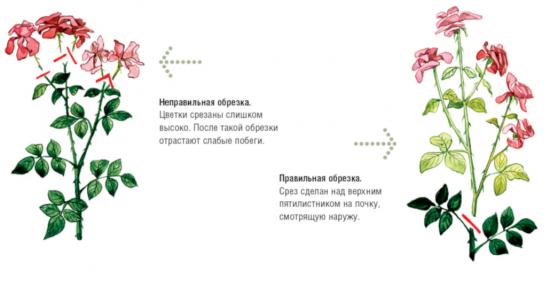
The procedure is carried out with a sharp knife, which should be disinfected beforehand. Cut the shoots to the third and fourth buds.
You should also remove young shoots, as they will not survive the winter, but will take away excess strength. The same needs to be done with the branches that have formed inside the bush and prevent the others from developing properly.
You don’t need to prune old roses in winter, so as not to further injure the plants, but perform these steps in the spring.
Let's see how to prune an indoor rose for the winter:
Autumn pruning of indoor roses
In the fall, pruning is done not only to support the plant. In mid-October, apartments and houses begin to heat up, so dry air prevents the formation of buds, and the shape of the stem and bush is deformed. To avoid this, you need to shorten the stem, leaving five buds.
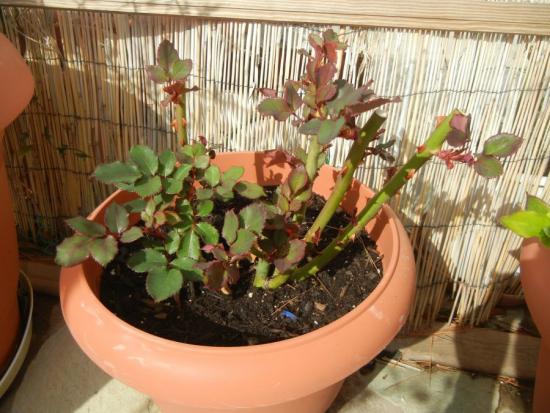
You can also thin out the bush and remove dry leaves without waiting for them to fall off.
Sanitary trimmings
Sanitary pruning is mandatory and basic.
It includes the following manipulations:
- Dry, crooked and injured shoots are cut off. Only healthy branches are left.
- If there are absolutely no buds on the shoot, it can be cut off completely. You also need to cut to the base:
- shoots that do not have an upper central plug (bud);
- strongly curved;
- one of the branches that grows simultaneously from the same bud;
- central shoots that drown out the crown.
Then the bushes are inspected to detect disease or fungus.
If similar manipulations have already been carried out after the flowers have fallen, the above actions do not need to be carried out. You can simply inspect the flower and eliminate everything unnecessary.
Formative
Trimming for shaping is optional. Some prefer a strict shape, for example, in the form of a cone or a ball. If you cut the height, the rose will be low and the bush will be flat.
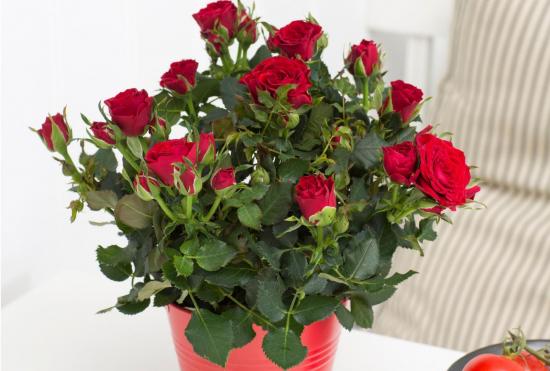
The formation also depends on the crop variety. Chinese or floribundas can be trimmed in different ways, but for miniature varieties, elliptical, conical and spheroidal shapes are suitable.
If you bought an adult rose, then to change the shape you need to shorten and trim the side shoots gradually; the desired shape will be obtained in two years. Thanks to such slow actions, the flower is given time to restore and thicken the crown.
How to prune a rose to bloom, how to get constant flowering
Some believe that in order to increase the flowering period, you need to constantly prune. However, this is a controversial issue. Many gardeners believe that it is better not to prune during the flowering period, as the stem loses strength and is restored.
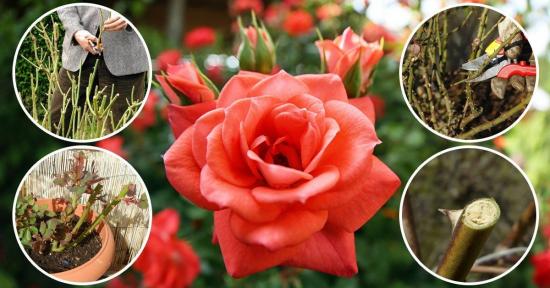
It is recommended to cut the stem down to 5 buds in order to resume the growth of new buds, and during the flowering period, regularly trim off faded flowers.
In any case, dry buds create a sloppy appearance, and removing them won't hurt. In mid-autumn, when the days begin to decrease, the flowers will stop setting, and there is no way to influence this.
So, indoor roses need constant care, only in this case the plant will bloom for a long time and delight its owners.
Pruning the bush plays an important role; this will not only improve the health of the flower, but will also give it a special shape.

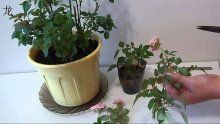







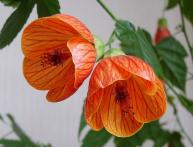





Comments
A very relevant article for me. I was just given a rose in a pot on March 8th. But I don’t know how to care for her. And pruning for me is generally a dark forest. Now at least I’ll know that pruning needs to be done not once a year, but several times.
I have never pruned an indoor rose and it grows on a long, thin cutting. Moreover, the flower size is small. Now, it is clear that this happened due to lack of pruning.
Pruning roses and other plants is one of the most terrible tasks for me; I am always afraid to do something to harm the plant, although I have already pruned roses several times and quite successfully.